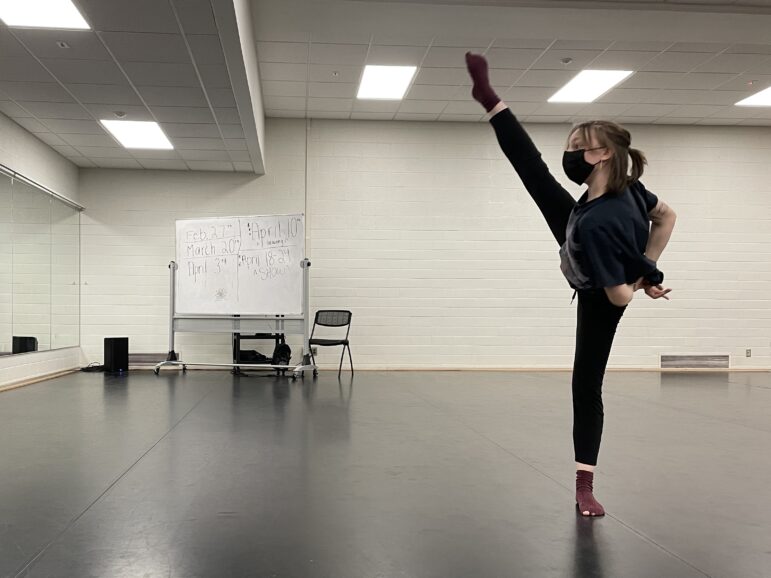
Gabrielle Nelson
Belle Hoke, dancer for the Orchesis Dance Company, choreographs a new routine after dance practice.The 2022 Winter Olympics in Beijing stood out for its adaptability to the COVID-19 pandemic and amazing performances by athletes across the globe, but it draws attention to the pressures young athletes face.
Russian figure skater Kamila Valieva, 15, was caught in a doping scandal. She was allowed to participate in singles but underperformed, falling twice and placing fourth. She skated off the rink in tears and was met by a coaching team which berated her before consoling her.
Grace French, a former gymnast and dancer, said, “The doping obviously wasn’t her decision, in my opinion. I think she likely did not have a choice in how she moved forward with her athletic training. There was so much pressure on the child that it was obviously child abuse.”
French is founder and president of the Army of Survivors, a nonprofit organization dedicated to building awareness around sexual abuse against athletes at the national and global levels. She said they promote resources about trauma and how to create supportive sports environments for sexually abused athletes, their families and their coaches. The Army of Survivors is working with other organizations, such as the Sports and Rights Alliance and Keep Kids Safe Coalition, to pass legislation that protects the rights of athletes and children.
“They put medals and trophies and winning above the welfare of these children and of these athletes,” said French, 26. “What it should be is the child first and then the athlete second. You have to focus on the complete identity of this person to make sure they are getting the well-rounded support that they need in order to be a human.”
Melanie Pries, 18, started dancing when she was two and a half. Now, she dances for the Orchesis Dance Company at Michigan State University. She said she felt discouraged as a child when she was placed in the back of competitive dances.
“I felt pressure to do good in my solos and to never mess up on stage,” said Pries, packing up after an Orchesis dance practice.
Belle Hoke also dances and choreographs for Orchesis. They started dancing competitively at age 14 and said a lot of pressure is put on athletes, especially those in the performing arts, by teammates, coaches and parents. Hoke said dance causes eating disorders and substance abuse because of the constant comparison to other dancers and instigation from coaches about staying thin to perform well.
“Sophomore or junior year in high school, there was an older dancer. She was a senior at the time. She told me that she didn’t put salad dressing on her salads because of the extra calories, and I had never heard that before. I did not touch salad dressing until like last year, so probably three years,” said Hoke, 20. “I thought, ‘If she doesn’t do it, I must not be able to do it either.’”
Hoke said her ballet teachers would say, “I don’t want to see your lunches, girls,” meaning they want their dancers to suck in their stomachs while standing at the ballet barre. At a young age, these athletes develop negative relationships with eating and body image. Competition compounds the pressures.
“I think that, while dancing can be healing, the pressures that come with it are really detrimental, especially to young girls,” said Hoke, who runs a nonprofit called We Are Queens that empowers dancers to pursue sustainable futures in the arts.
If you’re looking for opportunities to support young athletes or learn about sexual abuse against athletes, visit thearmyofsurvivors.org and view their resources and support page. Participate in a poster and art contest, which French said the Army of Survivors plans on running later in the year to bring awareness to its mission. Also, educate yourself and others about the pressures of sports performance and encourage well-rounded athletic support that fosters personal growth instead of a winning-at-all-costs mentality.